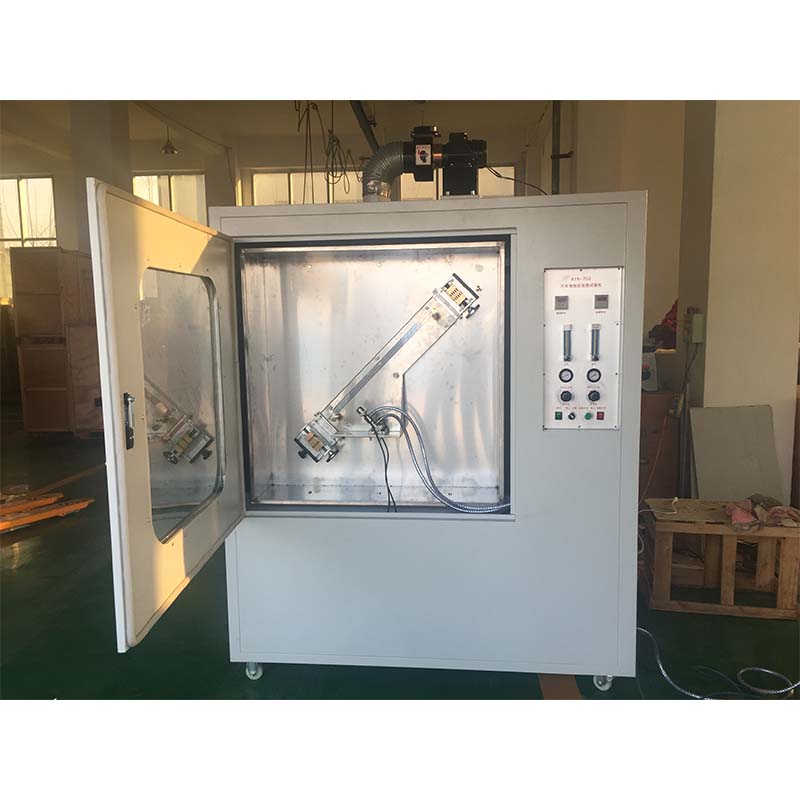smoke density chamber test
Understanding Smoke Density Chamber Testing A Crucial Step in Fire Safety Assessment
In a world increasingly aware of safety standards and regulations, the importance of smoke density chamber tests cannot be overstated. These tests are essential for evaluating the performance of materials in terms of smoke production when they are subjected to combustion. As fires pose significant risks to life and property, determining the smoke density of materials is vital for various industries, including construction, aerospace, automotive, and more.
Smoke density chamber testing involves the use of specialized equipment designed to measure the amount of smoke produced by a material when it burns. The process typically follows standardized methods, such as those outlined by organizations like ASTM (American Society for Testing and Materials) or ISO (International Organization for Standardization). During the test, the sample is ignited within a controlled environment, and the resultant smoke is collected for analysis.
One of the primary metrics derived from smoke density testing is the Smoke Density Index (SDI). This index quantifies the smoke's opacity, providing insights into how visible the smoke would be in an actual fire scenario. A higher SDI indicates greater smoke production, which can significantly impair visibility and hinder evacuation efforts during a fire. Therefore, materials with lower smoke density ratings are preferred, especially in applications where safety is paramount.
smoke density chamber test

Furthermore, smoke density is closely linked to the toxicity of the smoke produced. Many materials, when burned, release hazardous gases and particulates that can endanger lives, even in situations where flames are not directly present. By identifying materials that emit lower amounts of smoke in combination with fewer toxic substances, manufacturers can improve overall safety.
The importance of smoke density chamber tests extends beyond mere compliance with regulations. They play a vital role in product development, allowing engineers and designers to make informed decisions about material selection early in the design process. By prioritizing materials with lower smoke density, developers can enhance the fire performance of their products, thereby contributing to safer buildings, vehicles, and consumer goods.
In addition to its safety implications, smoke density assessment can also influence insurance costs and approval for building codes. Products that are proven to produce less smoke often comply more readily with the stringent requirements set by fire safety regulations. This can not only facilitate easier market entry but also reduce potential liabilities in the event of a fire.
In summary, smoke density chamber testing is a fundamental aspect of fire safety assessment that carries significant implications for public safety and product development. By emphasizing the need for materials that produce less smoke, industries can mitigate the risks associated with fire events, ensure compliance with safety standards, and ultimately protect lives and property. As technology and standards advance, the role of such testing will likely become even more critical in preventing fire-related incidents and enhancing safety measures across various sectors.
-
Why the Conductor Resistance Constant Temperature Measurement Machine Redefines Precision
NewsJun.20,2025
-
Reliable Testing Starts Here: Why the High Insulation Resistance Measuring Instrument Is a Must-Have
NewsJun.20,2025
-
Flexible Cable Flexing Test Equipment: The Precision Standard for Cable Durability and Performance Testing
NewsJun.20,2025
-
Digital Measurement Projector: Precision Visualization for Modern Manufacturing
NewsJun.20,2025
-
Computer Control Electronic Tensile Tester: Precision and Power for the Modern Metal Industry
NewsJun.20,2025
-
Cable Spark Tester: Your Ultimate Insulation Assurance for Wire and Cable Testing
NewsJun.20,2025
 Copyright © 2025 Hebei Fangyuan Instrument & Equipment Co.,Ltd. All Rights Reserved. Sitemap | Privacy Policy
Copyright © 2025 Hebei Fangyuan Instrument & Equipment Co.,Ltd. All Rights Reserved. Sitemap | Privacy Policy
